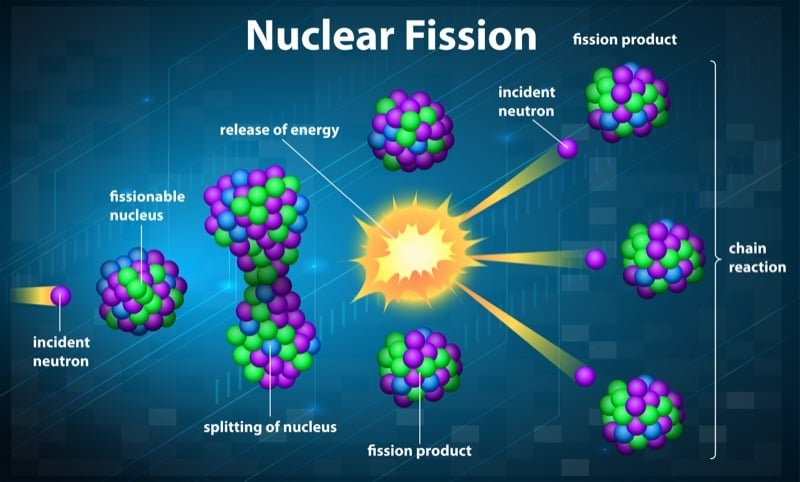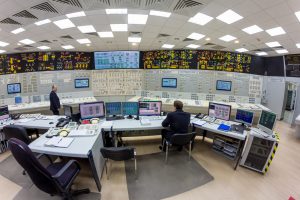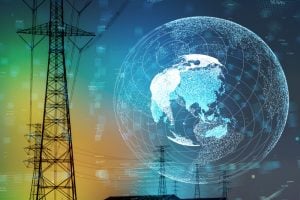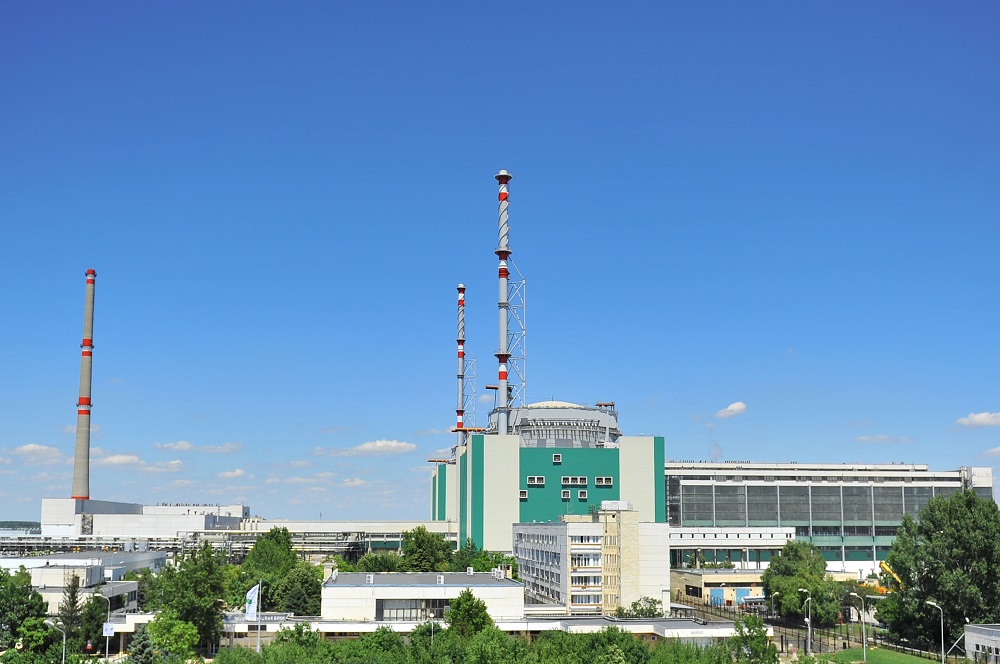Bitcoin mining has been criticized by mainstream media, environmentalists and some economists for its energy consumption deemed excessive. Yes, the proof of work system burns a lot of electricity but does the planet suffer from deficit? Here’s a look at an interesting aspect of nuclear power generation – it turns out the wasted capacity of just several reactors is enough to satisfy the needs of the whole network. Besides, when fully loaded they are actually more efficient and safer.
Also read: Mainstream Media Claims Bitcoin Burns More Energy Than Ireland – Does It?
Energy – Bitcoin Needs It, the Atom Has It
Using oversimplified explanations is never a good approach to understanding complex matters. That’s almost inevitably true when modern, high tech is involved, regardless of the field. Unfortunately, that same failed strategy is often employed by opponents of important achievements of humanity. Two such inventions are the nuclear technology that harnesses the atom and the cryptocurrency protocol that unleashes financial freedom. They have more things in common than just being criticized and can actually complement each other in order to better respond to critics.
To avoid oversimplification, let’s just focus in this article on one aspect that concerns both cryptocurrency mining and power generation – energy – Bitcoin needs it, the atom has it. You’ll often hear from clicks and views chasing media and overly worried eco-activists and economists that bitcoin burns more of it than a whole country. And while that accusation is far from the truth, as we’ve explained before, you’ll be surprised to hear something you are not being told – it’s way better to burn excess energy than waste it. Bitcoin mining could do exactly that. As the saying goes, when there’s a will, there’s a way.

Nuclear fission, the physical process that releases energy in a nuclear reactor, can’t be paused or stopped at someone’s will. It can only be temporarily restrained. A nuclear power plant (NPP) uses this nuclear reaction in a controlled manner to basically boil a fluid, often water, which in turn runs through giant steam turbines to generate electricity. The more it does that, the more efficient it is. Pulling on the brakes, in this case, does not save any fuel – it’s literary wasted.
And while NPPs can produce a constant amount of energy, we actually don’t need all of it at all times. Fluctuations in consumption are a fact of life. At nights, for example, the power output of nuclear reactors is forcefully decreased by inserting control rods to lower the intensity of the nuclear reaction. That’s a really inefficient procedure as almost all costs in nuclear energetics are fixed. From an economic standpoint, that means the more electricity you produce from a certain amount of fuel, the cheaper it will be. From a technological point of view, fewer cycles of heating and cooling create less thermo-mechanical stress on different components, including the fuel pellets and their cladding – cracks have been found after just two annual operating cycles in pressurized water reactors. In other words, NPPs are more efficient, safer and have a longer lifespan, when they operate closer to their full capacity.
NPPs Under Pressure to Cut Electricity Generation
 Nuclear reactors may in principle be described as giant boilers but they are nothing like home appliances. Properly shutting one down takes time and it’s a procedure that should be performed only when absolutely necessary. At the same time, NPPs have to deal with peaks and lows in consumption on a seasonal, weekly and daily basis. Modern reactors are complex feats of engineering that are designed to adapt to the constantly changing energy needs of our homes and enterprises. In fact, they can do it many times a day by adjusting the power supply to the grid so that it never gets overloaded or underpowered. Their ability to do so is called “load following.”
Nuclear reactors may in principle be described as giant boilers but they are nothing like home appliances. Properly shutting one down takes time and it’s a procedure that should be performed only when absolutely necessary. At the same time, NPPs have to deal with peaks and lows in consumption on a seasonal, weekly and daily basis. Modern reactors are complex feats of engineering that are designed to adapt to the constantly changing energy needs of our homes and enterprises. In fact, they can do it many times a day by adjusting the power supply to the grid so that it never gets overloaded or underpowered. Their ability to do so is called “load following.”
These days, most units perform large power changes once or twice per day to address the significantly lower consumption during night hours or weekends, and some are even capable of rapid changes of the power level when needed to stabilize the grid frequency. According to a report by the Nuclear Energy Agency (NEA) under the Organization for Economic Cooperation and Development (OECD), NPPs in Europe are required to have maneuverability capabilities in the interval of at least 100 to 50 percent of their rated power (Pr) with a rate of change of the electric output of 3 to 5 percent of Pr per minute. It should be noted that the maximum number of these daily cycles is limited, depending on the type of the reactor and the range of the variations.
More Grids Depend on Nuclear Power
More and more countries nowadays rely heavily on nuclear power to satisfy their energy needs. France is a good example, with more than 75 percent of its electricity generated at nuclear power plants. Other countries in Europe and around the world have also invested a lot in nuclear power generation. About 100 reactors account for almost 20 percent of the electric energy generated in the U.S. which produces about a third of the world’s nuclear electricity.
 According to a study by the International Atomic Energy Agency (IAEA), the integration of renewable energy sources is a major factor driving the need for flexible nuclear operation, along with the insufficient interconnection between national and regional grids and the inflexible generation mix in some countries. And as nuclear power is much more controllable by human intervention and considerably more efficient and cheaper than renewable wind, solar, and hydro sources, NPPs are becoming a crucial instrument in load following to maintain the stability of electric power systems. Of course, this comes at the expense of their efficiency and longevity.
According to a study by the International Atomic Energy Agency (IAEA), the integration of renewable energy sources is a major factor driving the need for flexible nuclear operation, along with the insufficient interconnection between national and regional grids and the inflexible generation mix in some countries. And as nuclear power is much more controllable by human intervention and considerably more efficient and cheaper than renewable wind, solar, and hydro sources, NPPs are becoming a crucial instrument in load following to maintain the stability of electric power systems. Of course, this comes at the expense of their efficiency and longevity.
Using nuclear reactors as base load sources instead of restraining those makes much more sense. Generating electricity closer to their full capacity and at a constant rate is the most economical, technically simple and safe mode of operation, according to NEA – that’s when power changes are limited to frequency regulation to ensure grid stability and shutdowns are only performed for safety purposes. And that’s exactly where bitcoin mining can help by utilizing the excess energy reactors can generate outside peak hours of consumption – remember, that doesn’t mean burning more nuclear fuel but simply using it more efficiently when society doesn’t need its energy.
Single NPP Can Power Bitcoin Mining
According to one estimate, recently quoted by The Economist, the annual global power consumption of the bitcoin core network is around 22 TWh. For a period of nine months, Jan. through Sept. 2018, our only nuclear power plant here in Bulgaria has produced 12,075,111,504 kWh of electricity or over 12 TWh – that’s with only two 1,000 MW reactors, one of which has been shut down for maintenance since last month. The four smaller units, 1,760 MW total capacity, were closed under pressure from the EU but when the Kozloduy NPP was working with all of its 6 reactors it was producing over 20,000,000 MWh or 20 TWh of electricity. That’s almost as much as the bitcoin network needs, and it wasn’t even its full capacity.

Data provided by Statista shows there are currently 450 nuclear reactors in operation in some 30 countries around the world. According to the European Nuclear Society, their installed electric net capacity is over 390 GW. Around 60 new plants are under construction in 16 countries. In 2040, the global nuclear power capacity is projected to reach 602 GW.
So it turns out a single nuclear power station, designed in the 70s and 80s of the last century, is capable of satisfying the energy needs of bitcoin mining. By the way, authorities in the Russian region of Leningrad have already announced intentions to facilitate the building of large-scale mining farms in an industrial park they plan to set up at the old NPP in Sosnovy Bor. The Leningrad Atomic Electro-Station will be fully decommissioned by 2021. Maybe they should invite miners to mint coins at active nuclear power plants as well.
Do you agree bitcoin mining farms and nuclear power plants can complement each other? Share your thoughts on the subject in the comments section below.
Images courtesy of Shutterstock, Kozloduy NPP.
OP-ed disclaimer: This is an Op-ed article. The opinions expressed in this article are the author’s own. Bitcoin.com does not endorse nor support views, opinions or conclusions drawn in this post. Bitcoin.com is not responsible for or liable for any content, accuracy or quality within the Op-ed article. Readers should do their own due diligence before taking any actions related to the content. Bitcoin.com is not responsible, directly or indirectly, for any damage or loss caused or alleged to be caused by or in connection with the use of or reliance on any information in this Op-ed article.
The post How Bitcoin Mining Can Help Nuclear Reactors appeared first on Bitcoin News.
Powered by WPeMatico

